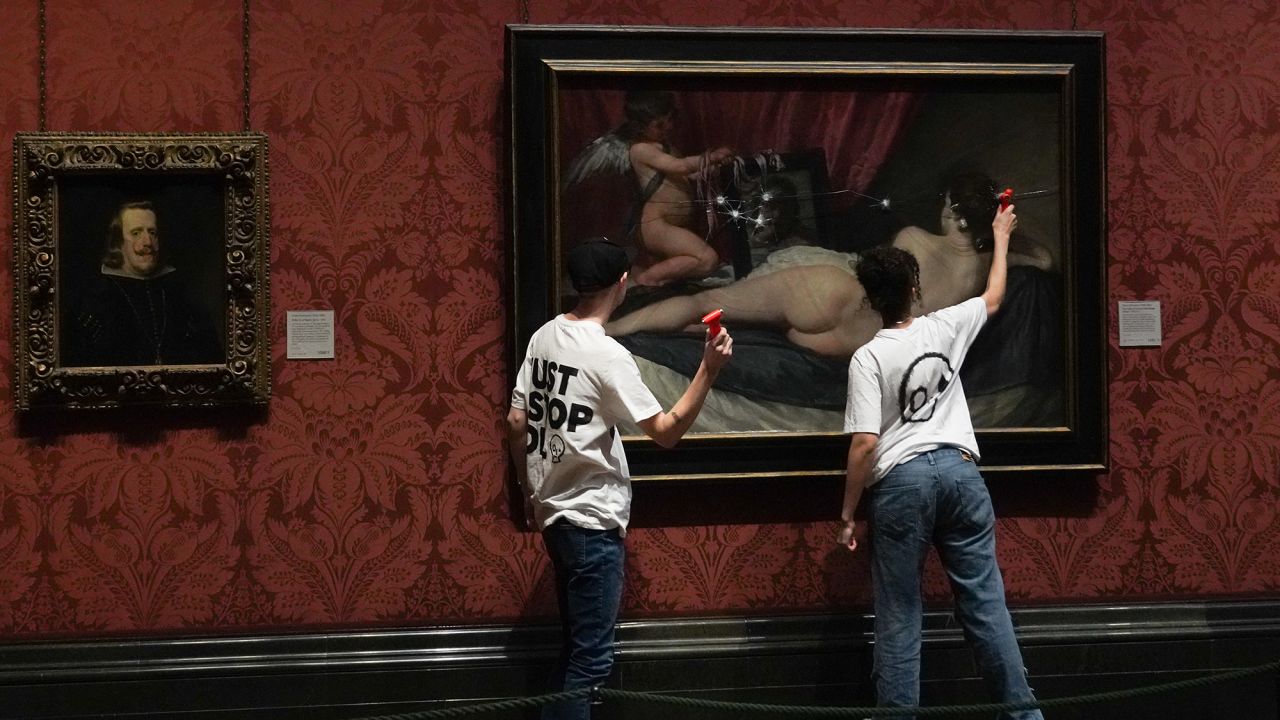In a shocking display of environmental activism, anti-oil protestors made headlines yet again with their destructive tactics. This time, they targeted a priceless painting housed at London’s National Gallery, shattering the glass covering that protected it.
Key Takeaway
Anti-oil protestors targeted the glass covering of Diego Velázquez’s Rokeby Venus painting at London’s National Gallery, causing damage to the protective enclosure. This act of vandalism adds to the group’s history of destroying art as a means of making their environmental message heard.
The Target: Diego Velázquez’s Rokeby Venus
The painting at the center of the controversy is none other than Diego Velázquez’s renowned masterpiece, the Rokeby Venus. Known for its artistic brilliance and historical significance, this artwork has unfortunately become a target for protestors advocating to “Just Stop Oil.”
Caught on camera and proudly wearing their JSO shirts, a male and female protester took hammers to the glass enclosure, unleashing their fury upon the protective covering. While they were unable to reach the actual painting, the damage to the exterior was evident.
A History of Art Destruction
This act of vandalism adds to the group’s reputation as art destroyers. In the past, they have splashed paint and soup on other famous European paintings, leaving their mark on countless cultural treasures. Despite their distinctive attire, these protestors continue to gain access to museums and carry out their destructive acts.
Arrests and Criminal Damage
London’s Metro Police promptly arrested the two activists on suspicion of criminal damage. However, the evidence against them is clear and damning, leaving little doubt about their involvement in this destructive act.
A Controversial Painting
Interestingly, this is not the first time the Rokeby Venus has suffered at the hands of protestors. In 1914, suffragette Mary Richardson slashed the painting as a political statement against the objectification of women and in support of the women’s suffrage movement. The recent act of vandalism adds to the painting’s controversial history.
As museums around the world continue to navigate the delicate balance between accessibility and security, incidents like these serve as a reminder of the challenges they face. The need to protect cultural heritage while allowing public engagement with art is a complex task, requiring constant vigilance and adaptation to changing circumstances.
While protestors advocate for their cause, it is essential to find constructive and peaceful ways to address environmental concerns. Respecting the artistic and cultural treasures that enrich our society should be a shared priority, allowing for meaningful dialogue and progress on these pressing issues.


